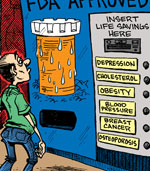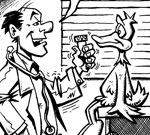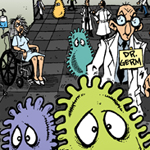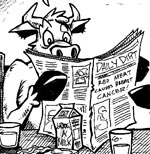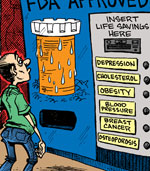Answer to the Question ;What is Inositol?
| Share on Facebook | Share on Twitter | Share on Google+ |
A vitamin-B complex member
The main question is "what is inositol?" Research has categorized it as belonging to the B-vitamins group. Other vitamins falling within this category include vitamin B-1, vitamin B-2, vitamin B-3, vitamin B-5, vitamin B-6, vitamin B-9, vitamin B-12, choline, and biotin.
There are studies that show that this status of inositol as a Vitamin-B complex member is not official. The facts indicate that it cannot be regarded as a vitamin. It has no nitrogen content thus relegating it to a non-vital amine. In addition, it is the human body which also produces inositol.
Sources of Inositol
Inositol is an organic component of every cell membrane. Hence, all animals, plants, including people, are good sources of inositol.
In plant cells, inositol may be obtained in the form of phytic acid. Under this form, it may combine with minerals. This will lead to its negative absorption. Vegetables and fruits that are particularly rich in inositol are cabbage, beans, legumes, seeds, nuts, cantaloupe, bananas, raisins, oranges and other citrus fruits, among many others. Other plant products containing inositol include wheat, cereal, oat flakes, wheat bran, wheat germs, brown rice, brewers yeast and unrefined molasses.
In animals, inositol form part of the phospholipids. Phospholipids can be found primarily in the brain as well as in the other major systems of the body. Hence, beef brains, together with the heart and liver of an animal are abundant in inositol.
Inositol Hexanicotinate and/or Inositol Hexaniacinate
These two terms are interchangeable as they refer to the same thing. This is a case when a lone molecule of inositol is linked through chemical reaction to six niacin molecules. Given the six niacin molecules, this is deemed an enhanced Vitamin B-3 (niacin) form.
This may likewise be referred to as inositol niacinate, inositol nicotinate, hexanicit or "no flush niacin".
Inositol Benefits
You may wonder why it is also called as "no-flush niacin". The reason is that it is able to preserve the positive effects of niacin without the side effects of flushing as well as possible damage to the liver.
The adverse effects of flushing include itchiness or redness of the skin due to high dosage. The benefits of niacin are maintained such as ability to keep your body's cholesterol at a lower or safe level.
Inositol hexanicotinate/ hexaniacinate is claimed to be effective in improving blood circulation aside from lowering a person's blood pressure. Additionally, it is said to improve one's mental health.
Inositol and Health Disorders
Inositol plays a key role in maintaining order inside your body including your mind. Several researches reveal that a reduced level of inositol in your brain may trigger depression, anxiety or panic attacks. Studies conducted among patients suffering from depression yielded that inositol may be used as an anti-depressant sans the side effects.
In addition, these research studies concluded that inositol supplements are very effective in treating people with social and mental disorders.
More Inositol Related Articles
Inositol Side Effects - Inositol is a nutrient that offers both advantages and disadvantages. Learning some of the reported inositol side effects will assist you on the proper action to take.
Inositol Benefits - Learn how taking inositol benefits both your health and your body with these 7 amazing facts.
Inositol Dosage - Maintaining the balance within our body is important for it to function smoothly. Knowing the nutritional requirements of your body and the recommended inositol dosage can assist you in determining your dietary needs.
-
Skin CareMen Skin Care
-
Free ResourcesFree eBooks
-
Every person is a God in embryo. Its only desire is to be born.Deepak Chopra
-
Featured Health SupplementTotal Balance
 provides a broad spectrum of around 80 of the nutrients that your body needs…including vitamins, minerals, trace elements, antioxidants, amino acids, neuronutrients, bioflavonoids, carotenoids, herbal extracts, enzymes and other complementary co-factor ingredients.
provides a broad spectrum of around 80 of the nutrients that your body needs…including vitamins, minerals, trace elements, antioxidants, amino acids, neuronutrients, bioflavonoids, carotenoids, herbal extracts, enzymes and other complementary co-factor ingredients.
-


